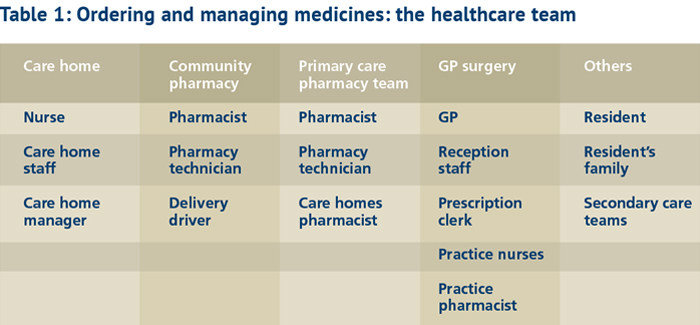Have you completed the first module in this series on mental capacity?
Part one: Understanding health and social care structures
CPD activity
Before you start reading this article, think about:
- What do I want to learn?
- What will I gain from this learning?
- What will my employer gain?
- What difference will it make to people who
use my services?
There are a number of steps that need to be followed to ensure medicines for care homes are ordered and dealt with efficiently. Communication between all individuals involved in managing the medicines of care home residents (see Table 1) at each of these stages is key.

Step 1: Care home requires medicines
Medicines are valuable and costly to the NHS, so it is important that the care home has a robust ordering system that allows sufficient time for the care home to check the prescriptions and the pharmacy to check and dispense them.
Medicines wastage in England is estimated to cost £300 million each year and of this, £50 million is related to unused medicines disposed of by care homes. Regular communication between the pharmacy team, GP and care home can improve the ordering process and reduce waste. This can be achieved by ensuring:
- Current stock levels are checked before ordering
- Medicines still in use are carried forward and not returned to the pharmacy to be reordered at a later date
- Where possible, resident’s medicines should be synchronised to run out at the same time, saving time and reducing waste
- Residents should have regular medication reviews.
